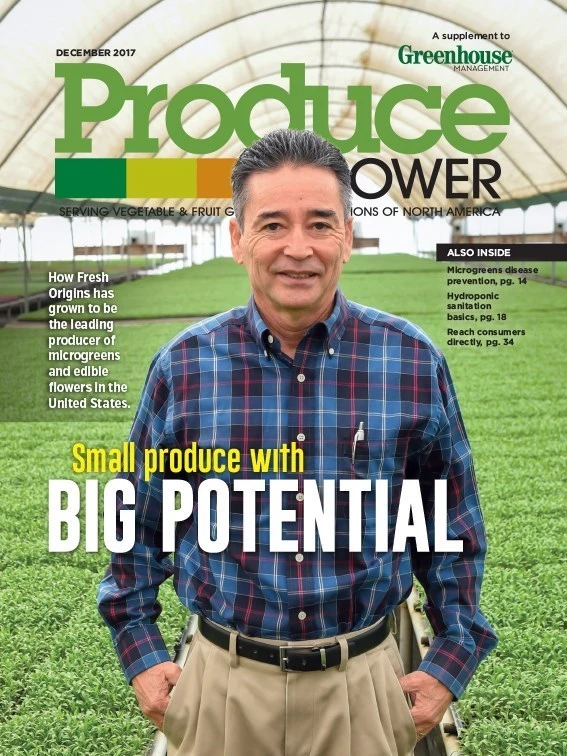
As disease control methods change, more growers are starting to incorporate biological fungicides into their product rotations. Dr. Matthew Krause, product development manager at BioWorks, talks about some of the common plant diseases in greenhouse edible crops and ways to biologically treat them.
Produce Grower: What are some plant diseases that greenhouse produce growers face on a regular basis that they should be aware of?
Dr. Matthew Krause: There are the usual culprits for foliar and fruit diseases of tomato, pepper and other crops: Botrytis cinerea, which causes grey mold; leaf blights and fruit blights and bacterial diseases, which can be caused by Xanthomonas, Pseudomonas and Clavibacter species. Growers may also face Anthracnose on several different greenhouse vegetables as well as gummy stem blight and powdery mildew on cucumber. Also worth mentioning is downy mildew, which is quite difficult to control on crops such as basil.
PG: What are some soil-borne diseases, or root diseases, that affect produce?
MK: There are damping-off diseases caused by Pythium and Rhizoctonia that affect germinating seeds and young plants. Then there are root and crown rots caused by these two pathogens and Phytophthora as well as wilts caused by Fusarium species that may come along later in a crop, usually as the crops are stressed while they grow more rapidly, flower and develop fruit.
PG: How can growers treat plant diseases using biological fungicides?
MK: Biological fungicides and bactericides work preventively against plant diseases. They should be used as early as possible in a crop, along with good cultural and sanitation practices, to minimize disease risks and be re-applied at recommended rates and intervals to maintain low disease pressures throughout crop production. Because most registered biofungicides are not curative and remain on the outside of the plant, they are not effective at high disease pressures. The same principles apply to bioinsecticides used to manage insect pests and mites. You want to use biologicals right from the very beginning because this is usually where the pathogens can be first introduced to plants that are very vulnerable to pathogen attack, especially by those that cause soil-borne diseases.
PG: How can growers fit synthetic chemistries into a disease control program that is biologically focused?
MK: Many growers find that they can minimize the use, or reduce the use, of fungicide chemistries by using biologicals. When they need to use the chemistries, their active ingredients are often more effective because they don’t have the resistance being built up to them by the pathogens. That’s a benefit we see very frequently.
If plant material is received that is suspect for disease, or that is known to come in somewhat contaminated, a conventional grower can apply a tank mix or co-apply a chemical that’s known to knock down the pathogen with a compatible and appropriate biofungicide product. With this approach, a grower gets the quick knockdown of the chemical and the longer-lasting effect and multiple different modes of action of the biological. Growers who treat crops under higher disease pressures with RootShield Plus WP and a fungicide containing Propamocarb or Mefanoxam, depending on the crop situation, frequently get 8 to 10 weeks of root disease control before reapplication of RootShield Plus is needed. — Interviewed by Patrick Williams
Get curated news on YOUR industry.
Enter your email to receive our newsletters.
Explore the December 2017 Issue
Check out more from this issue and find your next story to read.
Latest from Produce Grower
- The Growth Industry Episode 3: Across the Pond with Neville Stein
- PG CEA HERB Part 2: Analyzing basil nutrient disorders
- University of Evansville launches 'We Grow Aces!' to tackle food insecurity with anu, eko Solutions
- LettUs Grow, KG Systems partner on Advanced Aeroponics technology
- Find out what's in FMI's Power of Produce 2025 report
- The Growth Industry Episode 2: Emily Showalter on how Willoway Nurseries transformed its business
- 80 Acres Farms expands to Georgia, Texas and Colorado
- How BrightFarms quadrupled capacity in six months






